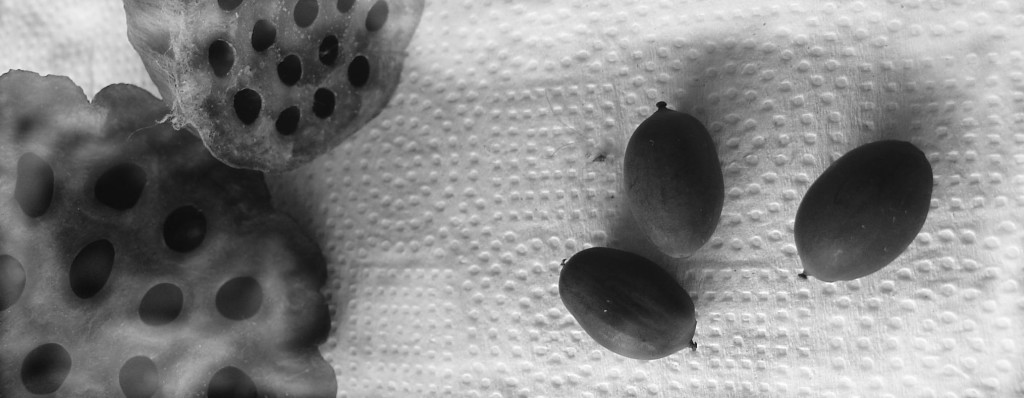Lotus seed for growing should be dry and hard.
To begin the sprouting process the hard dark brown seed coat is rubbed on rough sand paper on the end of the seed with a dimple (opposite the pointed end). Sand till a lighter colour can be seen in the center of the sanded area.
 Heat some water to 40 degrees C. Place the sanded seed into the warm water and cover, leaving overnight.
Heat some water to 40 degrees C. Place the sanded seed into the warm water and cover, leaving overnight.
In a 25 cm deep bucket place 5 cm of lightly fed garden soil. Gently fill with water to 10 cm over this and place in a sunny position to warm up and settle.
Encase each soaked seed separately in a ball of silty mud. Gently settle each ball of mud down till it nestles in the soil surface with about 10cm of warm water over.
Cover the top of the container with plastic to keep warm in a sunny position (average 20 degrees) while the seeds sprout.
Seed will usually sprout within 10 days.
At the two leaves stage, plants must be relocated to a separate container for each growing plant.
Keep growing in a warm area raising the water level as the plant grows. Feed your plants regularly all through the growing season and amazing results can be obtained.
The amount of fertilizer to use is relative to the volume of the container and the size and vigor of the plant. We feed our lotus with equal parts crumbed poultry manure and blood and bone with small amounts of slow release fertilizer with trace elements.
NOTE: Wallis Creek Watergarden only recommends growing lotus from seed if you are unable to obtain plants or if you are attempting to breed new varieties. Due to genetic variance and the high proportion of seedlings that do not flower we strongly recommend using root division to produce plants that are genetically identical to superior plant stock. The lotus we sell online are bare rooted tubers with shoots, not seeds.

